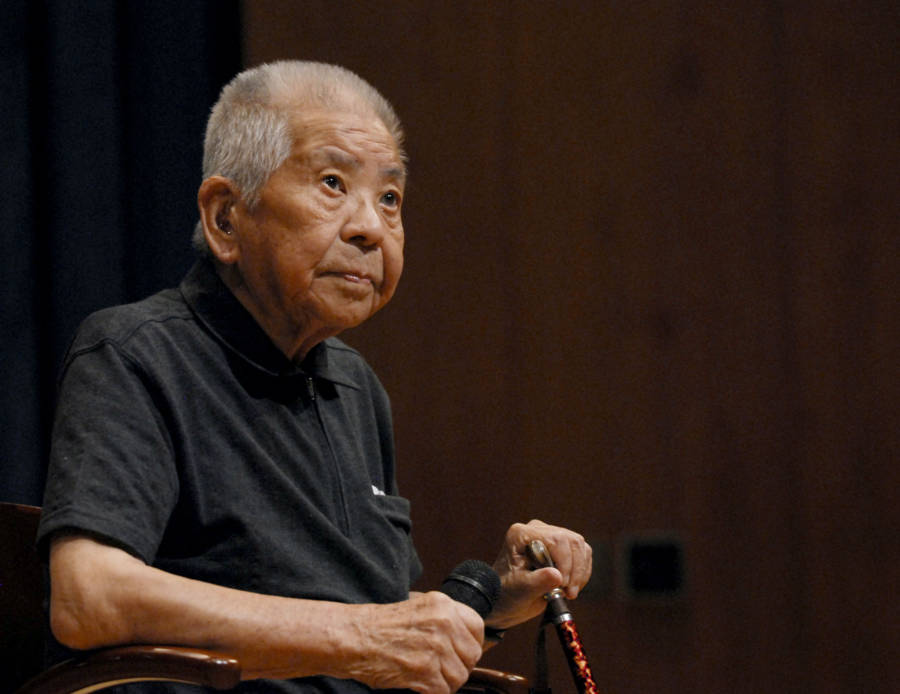Tsutomu Yamaguchi was in Hiroshima on business when he survived the atomic bombing on August 6, 1945 — only to return home to Nagasaki and survive that bombing on August 9.
In August 1945, while approximately 210,000 people died in the blasts at Hiroshima and Nagasaki, hundreds of thousands of others managed to survive the devastation of history’s first atomic bombs. The American bombings of these two Japanese cities unleashed previously unknown horrors upon the world, flattening buildings, incinerating civilians, and leaving survivors with gruesome injuries.
Though the apocalyptic terrors of the bombings took place three days apart in cities separated by more than 200 miles, there were dozens of people who actually survived both bombings — including a man named Tsutomu Yamaguchi.
Though the Japanese government recognizes some 650,000 people as hibakusha, or people directly affected by the atomic bombings, people like Yamaguchi are recognized as nijū hibakusha, or “double survivors,” while Tsutomu Yamaguchi alone is the one person officially recognized as having survived both blasts after actually being at ground zero for each.
On August 6, 1945, the day that the United States dropped the world’s first atomic bomb in Hiroshima, Yamaguchi was in the city for work. Three days later, on August 9, he was home in Nagasaki, just in time to experience that bombing as well.
On the day of the first bombing, Yamaguchi was in Hiroshima for a business trip that had lasted several months, and he was wrapping things up and preparing to return home to his wife and young son. At the time, Yamaguchi had no way of knowing that the course of the war between the U.S. and Japan had just shifted dramatically.
Japan refused to accept the terms of surrender put forward in the Potsdam Declaration on July 26. That same day, the components of Little Boy, the bomb that would soon be dropped on Hiroshima, arrived on the Pacific island of Tinian for final assembly, thanks to the transport ship USS Indianapolis. The Americans hoped that a powerful strike could end World War II in the Pacific Theater, just three months after it had ended in Europe with the surrender of Nazi Germany that May.

Jemal Countess/WireImage/Getty ImagesTsutomu Yamaguchi participates in a Q&A following a screening of a film about him. August 3, 2006.
To Tsutomu Yamaguchi, however, August 6 was just a normal day. Early on that clear summer morning, he was heading to the train station in order to leave Hiroshima and return to Nagasaki when he realized that he’d forgotten his ID stamp at the office. As he was walking back to get it, he noticed an airplane in the sky. What he didn’t know was that it was an American B-29 bomber called the Enola Gay, and it was carrying the atomic bomb.
At 8:16 a.m., just after Yamaguchi had noticed that the plane dropped something connected to a parachute, that thing exploded with the force of roughly 16 kilotons of TNT. The blast from the bomb traveled at 984 miles per hour, killing tens of thousands of people and destroying more than two-thirds of the city’s structures almost instantly as temperatures on the ground soared to 7,000 degrees Fahrenheit.
For Tsutomu Yamaguchi, the world turned blazing white — and then went black. The horrors mounted as he tried to make his way through the death and destruction of the ruined city to return home to Nagasaki, only to experience an atomic bombing for a second time.
Though he stayed quiet about his experiences during the atomic bombings for most of his life, Yamaguchi finally began discussing it in the 2000s. As he once remarked: “Having experienced atomic bombings twice and survived, it is my destiny to talk about it.”
Learn more about the music used in our podcast. History Uncovered is part of the Airwave Media network. Learn more about your ad choices by visiting megaphone.fm/adchoices.






